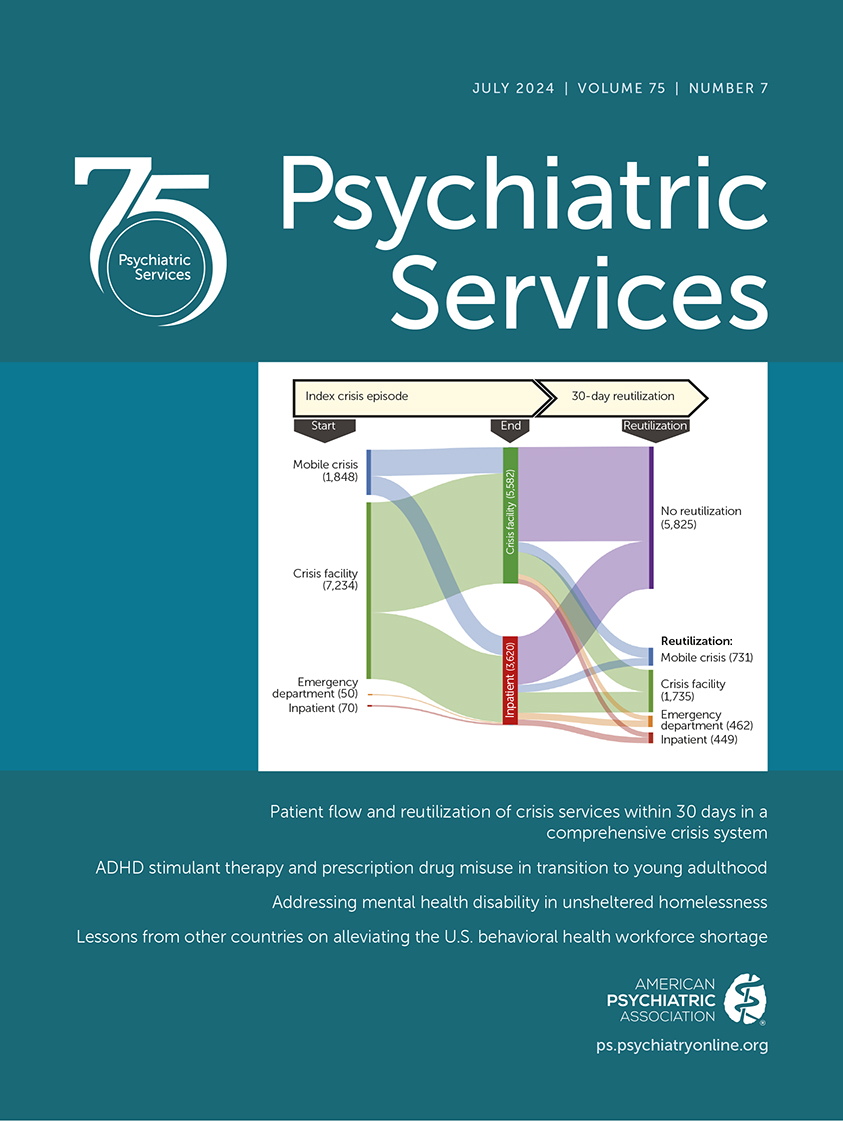Psychiatric Services
- Volume 33
- Number 9
- September 1982
Article
Publication date: 01 September 1982
Pages711–717Using data from the National Institute of Mental Health and the Census Bureau, the authors examine trends in the delivety of mental health services over the past 4O years as they relate to number and types of facilities, utilization of services, diagnosis,...
https://doi.org/10.1176/ps.33.9.711Publication date: 01 September 1982
Pages717–721The economic and political forces of the 1980s will have a profound effect on state hospitals. The total number of these facilities is likely to decline, although their utilization will probably remain high. Their staffing will most likely remain low and ...
https://doi.org/10.1176/ps.33.9.717Publication date: 01 September 1982
Pages722–728Without reform and linkage to a unified care system, state hospitals may become overcrowded and underfunded during the coming decades. The author delineates ten epidemiologic, demographic, and systemic factors that point to increases in episodes of ...
https://doi.org/10.1176/ps.33.9.722Publication date: 01 September 1982
Pages728–731From their beginnings, county or municipal psychiatric services have reflected the political and social attitudes of the times. Traditionally they were public facilities that delivered acute inpatient care and a variable range of outpatient services, and, ...
https://doi.org/10.1176/ps.33.9.728Publication date: 01 September 1982
Pages732–734In planning for the continued care of its large veteran population, the Veterans Administration is taking into account needs generated by trends such as a decreasing incidence of schizophrenia among veterans, an increasing use of outpatient services, and ...
https://doi.org/10.1176/ps.33.9.732Publication date: 01 September 1982
Pages735–739In the near future the programs, the staff, and the physical plant of private psychiatric hospitals will become increasingly specialized. Development of neuropsychiatric evaluation units and greater liaison between the psychiatric hospital and the ...
https://doi.org/10.1176/ps.33.9.735Publication date: 01 September 1982
Pages739–741The general hospital of the future faces the difficult task of maintaining quality of care in light of increasing demands for service and increasing efforts to control costs. Psychiatric units in general hospitals will share this challenge, reflected in ...
https://doi.org/10.1176/ps.33.9.739Publication date: 01 September 1982
Pages741–745Community mental health centers are subject to a number of pressures that will affect the way centers operate in the years ahead. These influences include a reduction infederal appropriations, the use of block grants to the states, the administration's ...
https://doi.org/10.1176/ps.33.9.741Publication date: 01 September 1982
Pages746–749Health maintenance organizations, though in existence since about 1940, gained nationwide attention in the early 1970s as an efficient system for delivering health care services. Though initially condemned fry organized medicine as unethical, the HMO has ...
https://doi.org/10.1176/ps.33.9.746Publication date: 01 September 1982
Pages750–754Costs play a major role in determining the types of mental health services that are delivered and thus are a key factor in any discussion of the future of mental health services. The author presents some of the available cost data for care provided in ...
https://doi.org/10.1176/ps.33.9.750Publication date: 01 September 1982
Pages755–761Determining the number of beds a community needs for the treatment of psychiatric patients has long been a concern of health planners. Variations in the definition of what constitutes a "bed" and in the mental health systems, environmental and social ...
https://doi.org/10.1176/ps.33.9.755Publication date: 01 September 1982
Pages762–765Unified services is a further development of the concept of a community mental health center, with the aim of providing coordinated, flexible, continuous, and nonduplicated services. Various states have attempted to translate the concept into systemic ...
https://doi.org/10.1176/ps.33.9.762Past Issues
View Issues Archive
Vol. 75 | No. 7

Vol. 75 | No. 6

Vol. 75 | No. 5
